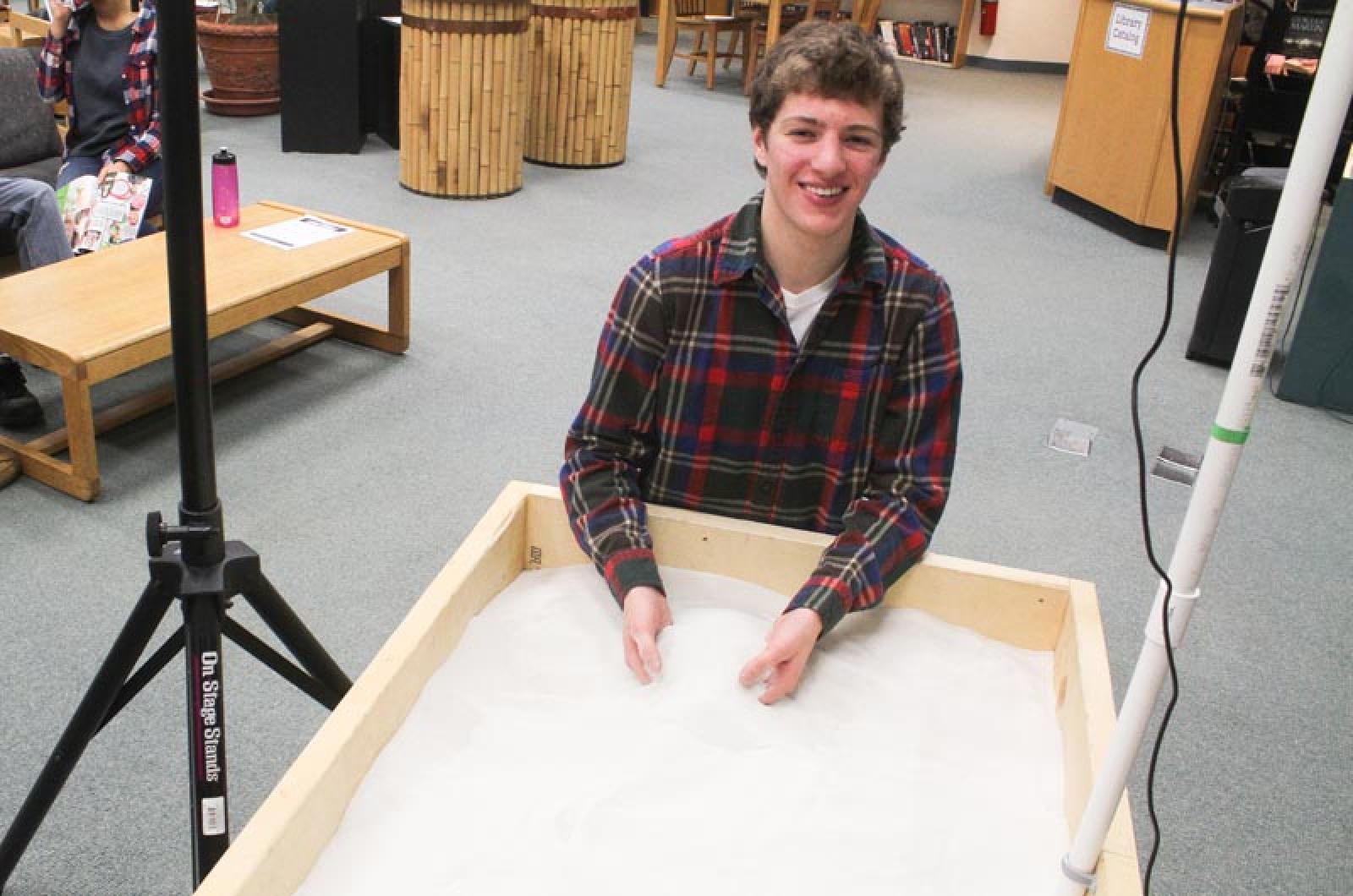Chemistry teacher Natalie Munn got a sense that science fairs were changing three years ago after a student at the regional high school created an iPhone app for his entry into the school’s fair.
“It worked,” she said. “He figured out how to do all of the code stuff . . . I just thought, wow, we are definitely embarking on a new direction here.”
That direction has reached another turning point. Earlier this month, junior Christopher Aring won first place in the South Shore Regional Science Fair, held at Bridgewater State University. No student from the high school has ever taken a first place at the regional event, although there have been several seconds, thirds and honorable mentions.
The project is an augmented reality sand table that blends engineering with computer science. The table is filled with 200 pounds of moldable sand that can be pushed and shaped to create mountains and valleys. As users create peaks and riverbeds, a projector above the table senses the changes and projects contour lines and flowing water onto the sand. It is at once accessible — who can resist playing with sand — and advanced.
“To do that kind of modeling, where you can have a computer react to changes in a surface, is what makes it so unique,” Mrs. Munn said.
The judges at the South Shore fair thought so, too. Chris will now represent Massachusetts at the Intel International Science and Engineering Fair, which will be held in May in Pittsburgh, Pa. More than 1,700 students from 70 countries will present their research there. Initially, Chris did not intended for his project to even be included in the science fair. He started it as an independent study, intrigued by a video he saw on the internet of a similar sand table.
“I thought it was amazing,” he said. “I’ve always been interested in computers and computer coding.” He had completed an internship the previous summer with NarwhalEdu, a startup that teaches engineering concepts to children, which introduced him to the mechanical, non-virtual aspects of design. The sand table independent study, which Chris worked on with information technology instructor Woody Filley, was a way to combine multiple interests.
“You get to learn something that is not really offered at the school, or is really specific,” Chris said of independent studies. The building trades class constructed the table in the fall, and then Chris set to work with the programming elements. Though similar computer programs existed for the project, they were all designed for Linux operating systems, so Chris had to create new programs just to get his table to work on a Mac. Then he coded programs to make the individual parts work seamlessly together. He works on the project every other day in school, but it’s never far from his mind.
“I go home and I’ll think of something and write it down so I can come back later,” he said.
Chris demonstrated the table in some high school classes and at a faculty meeting before he decided to bring it to the science fair. Mrs. Munn, his Advanced Placement chemistry teacher, sponsored the project. All entries must have a faculty sponsor, even if the project isn’t designed for a class.
“There’s no grade associated with [the science fair],” Mrs. Munn said. “He truly, truly loves that stuff. Chris is a diligent problem solver. If something doesn’t work, he’s not ever going to get frustrated by that.”
The table was a hit, a standout in a setting where most projects involve data presentation but little interaction beyond that.
“The whole time, there were just swarms of parents and people,” Chris recalled. “There were kids around me, and their parents would come use the table.” When he brought it to the South Shore regional fair, he spent hours talking to judges — some of whom hadn’t even been assigned to his project. They just wanted to see it for themselves.
Speaking with the judges helped Chris come up with new ways to use the table.
“I want it to work for a wider audience,” he said. “If someone says, oh, this won’t work for what I need to use it for. . . how can I fix it so it is?”
But his next challenge is more of a physical one: making the sand table more portable. After all, it has a trip to make in May.





Comments
Comment policy »